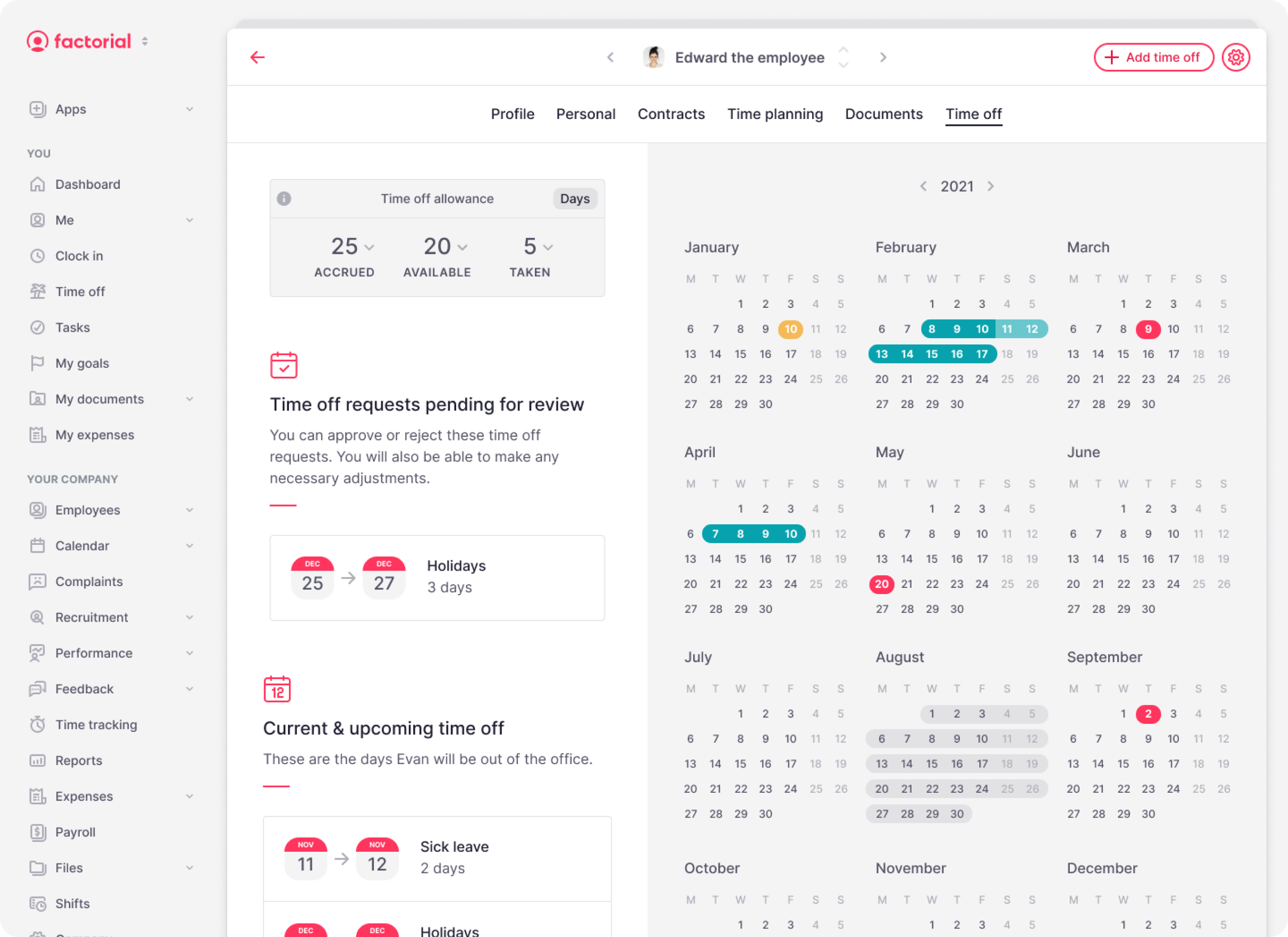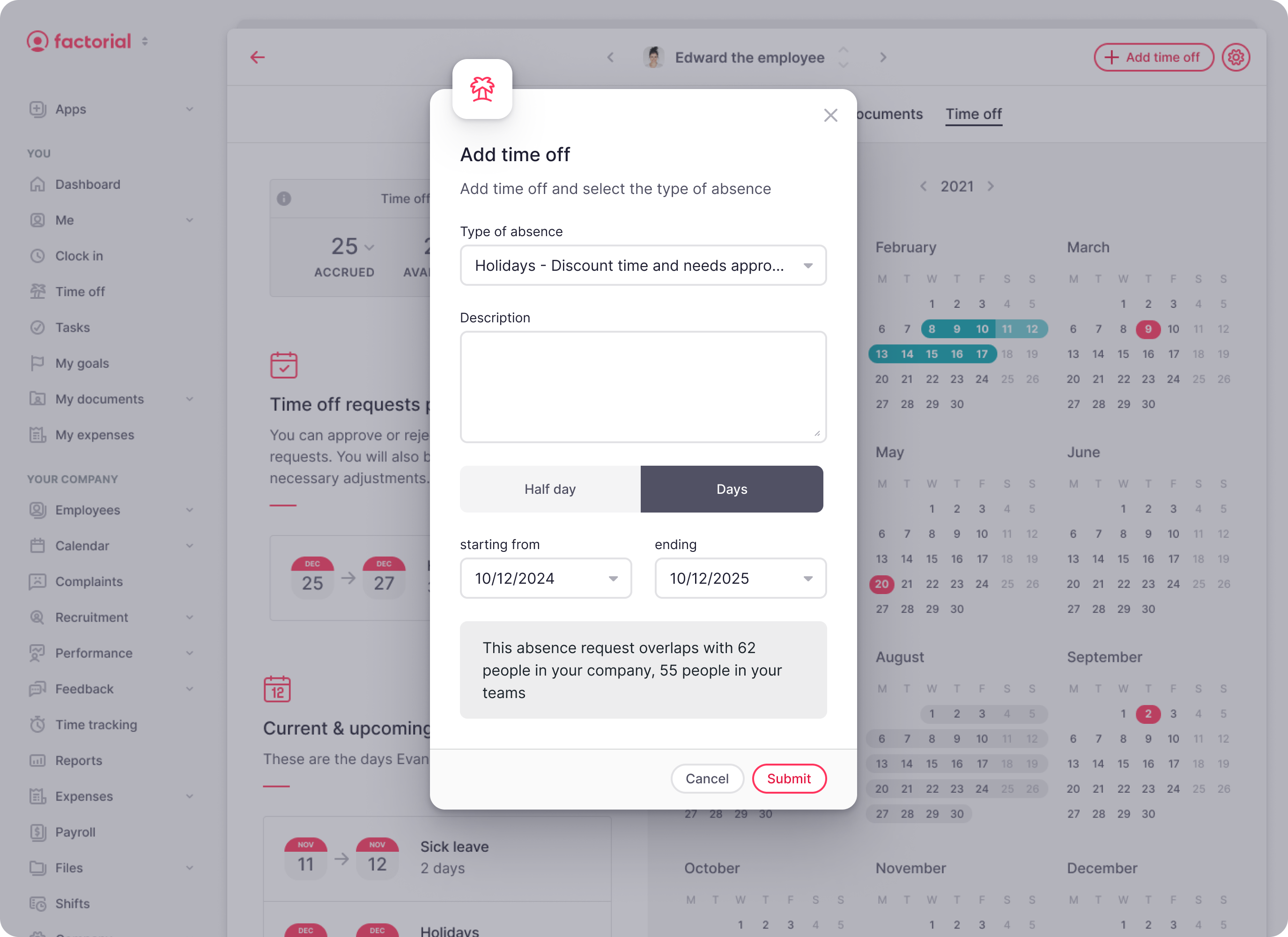Factorial Time Off
Factorial's Time Off Dashboard addresses challenges in decentralized time-off management by providing managers with valuable insights through a comprehensive dashboard. Prioritizing user experience, the dashboard empowers managers with real-time overviews and unified actions, enhancing decision-making and operational optimization for sustainable growth.
We designed, built and launched an evolution of Factorial's Reporting tool to cover any need that may arise for our customers. Based on fully scalable and adaptable Business Intelligence, we built a new reporting engine that can calculate any type of operation. With the new engine, the new SQL Editor, and the new Dashboard Manager, we are able to take the use of reports to a whole new level.
1. Context
Factorial is the software that helps companies to manage everything that a company needs to manage in one centralized system; saving time, eliminating mistakes and helping companies to make decisions.
Time off stands as Factorial's earliest functionality. The initial release in 2016 included features for employees to request absences or sick leaves, which were then subject to manager approval. However, it wasn't until 2022 that Time off gained its dedicated team.
Furthermore, beyond its historical significance, it's important to consider that certain components of Time off, which pertain to employee management, form an integral part of Factorial's core, constituting a notably intricate domain.

Employee's time off section
Conversely, Time off is a pivotal aspect of Factorial that must adhere to the diverse laws and regulations in the markets where the company operates. This entails universal compliance across all countries to effectively address customer needs. However, this compliance-driven approach has historically impacted user experience optimization.
Over the span of seven years, Factorial has witnessed growth through the development of new products and the enhancement of existing ones. The present iteration of Time off is markedly distinct from its inaugural version, reflecting seven years of iterative refinement and the introduction of numerous features, giving rise to significant user experience challenges.
2. Problem
The decentralization of time off management within the company poses significant challenges for understanding current and future absence patterns. While employee data is dispersed across different sections, accessing it individually hampers overall workforce assessment. Although managers can access consolidated information through Excel exports, this method is reactive and not suitable for daily tasks. Basic actions like requesting or approving absences suffer from decentralization, with different locations offering varied means of performing these actions, leading to confusion.

Absence request from employee profile.
3. Prioritization
All of these issues resulted in several pains for many customers, but they were never a reason for churn, nor did they prevent deals from closing or compromise MRR, so they were always de-prioritized in favor of improvements with much more impact on the business in the short term. But the team knew that all these issues affected most of our customers and, although they did not affect the short-term business metrics, they were a key point for the user experience of our product.
We couldn't leave UX aside, so I convinced my Product Trio that we had to address this big problem and that solving it would impact most of the other issues in our backlog, and in turn, our business metrics, in the medium and long term.
4. Discovery
The aim was not just to create a vacation tracking tool but to empower managers with valuable insights. This led to the development of a comprehensive dashboard consolidating Time Off data. Unifying Time Off was essential due to Factorial's upcoming separate pricing model. Extensive research, including interviews, tests, and surveys involving clients and internal stakeholders, guided the dashboard's design, ensuring it met diverse user needs and justified the investment. Various methods such as card sorting and empathy maps were employed to understand user perspectives and requirements for Time Off data visualization.
5. Solution

With this new dashboard, we present user with relevant and summarized information in a clear and concise way. Its main objective is to provide a real-time overview that facilitates decision making. In addition to that, we have unified basic actions. From this dashboard a manager is able to:
- Create a leave for an employee or a specific group of employees
- Edit a leave for a specific employee
- Approve or reject absence requests
- Access to all Time off exports
- Select a time range
- Filter by team or workplace
- Search for an employee
With a better understanding of performance, organizations can optimize their operations, spot opportunities and achieve more sustainable growth.
© 2024 Manel Abella
© 2024 Manel Abella
